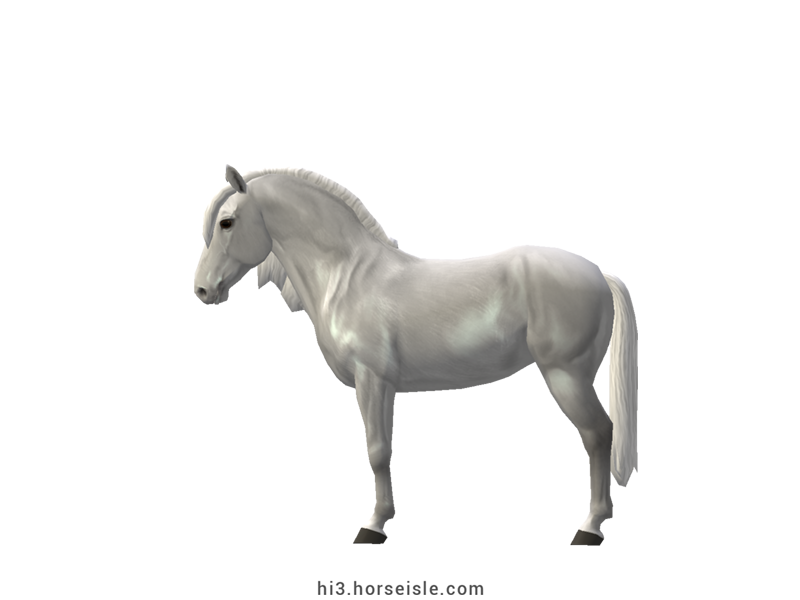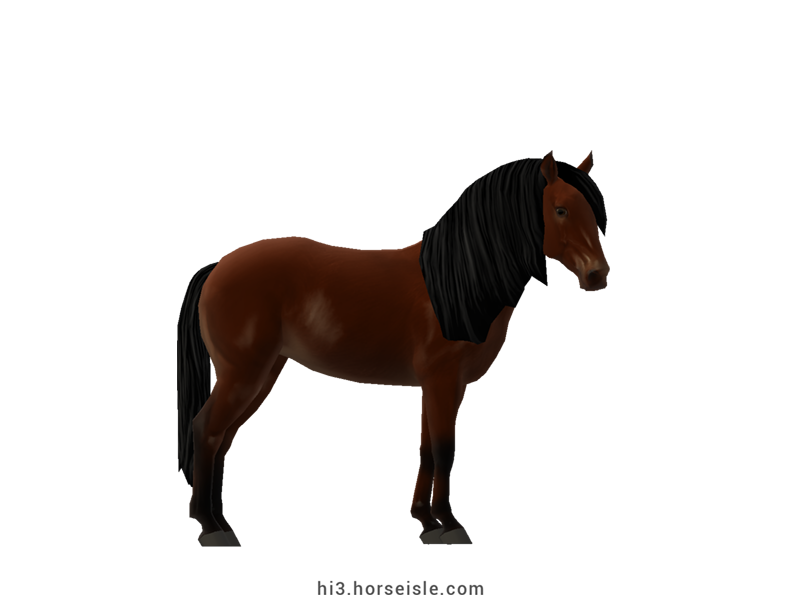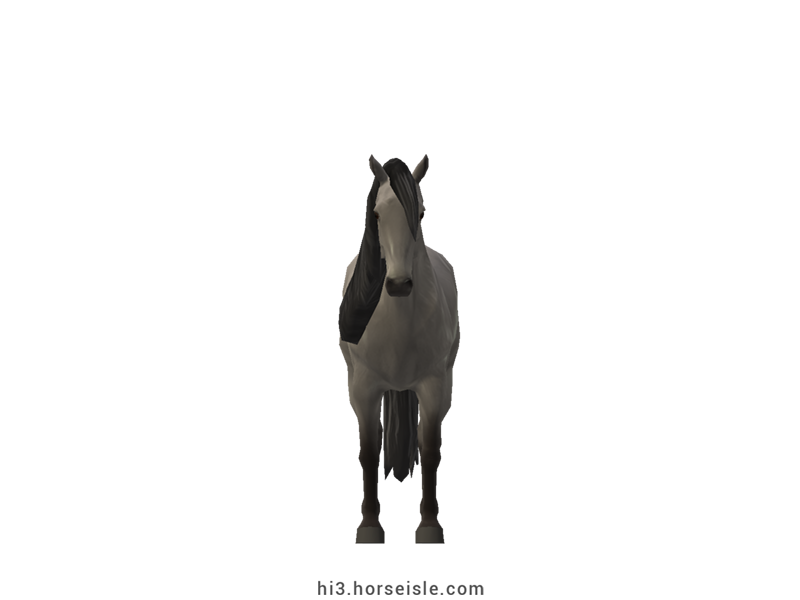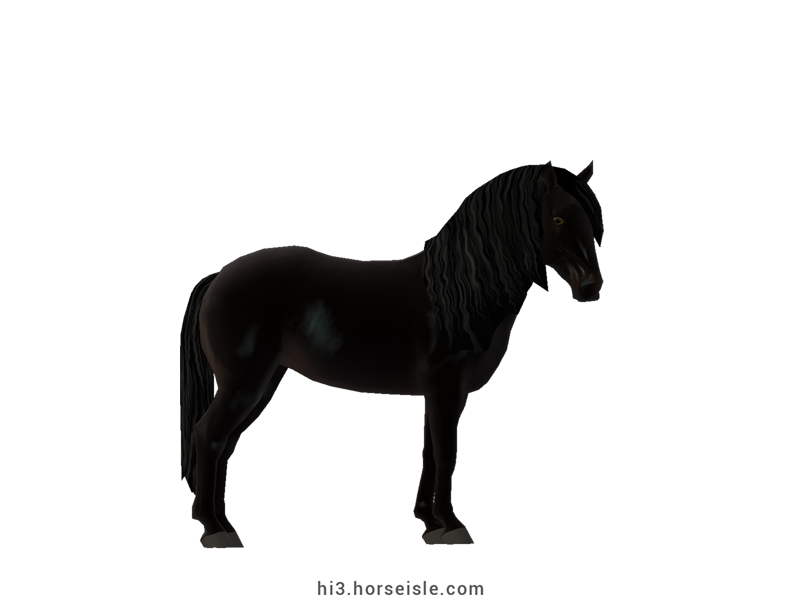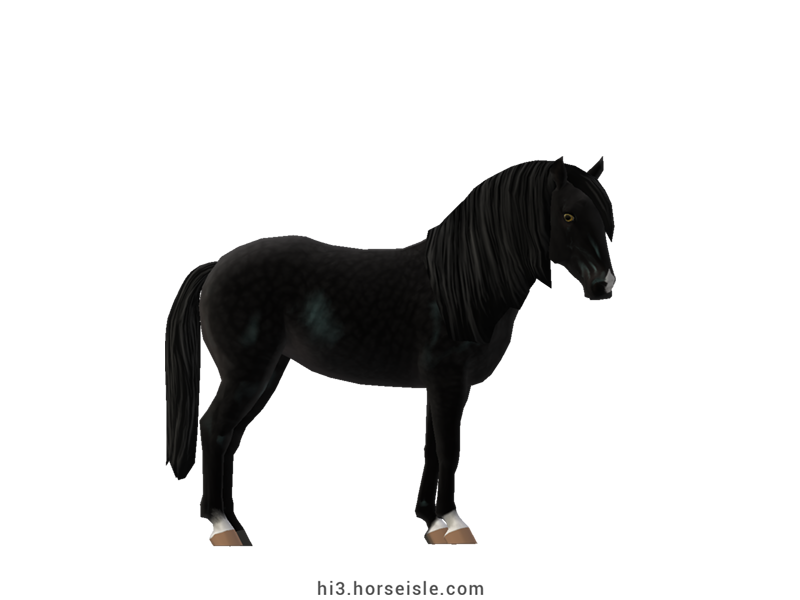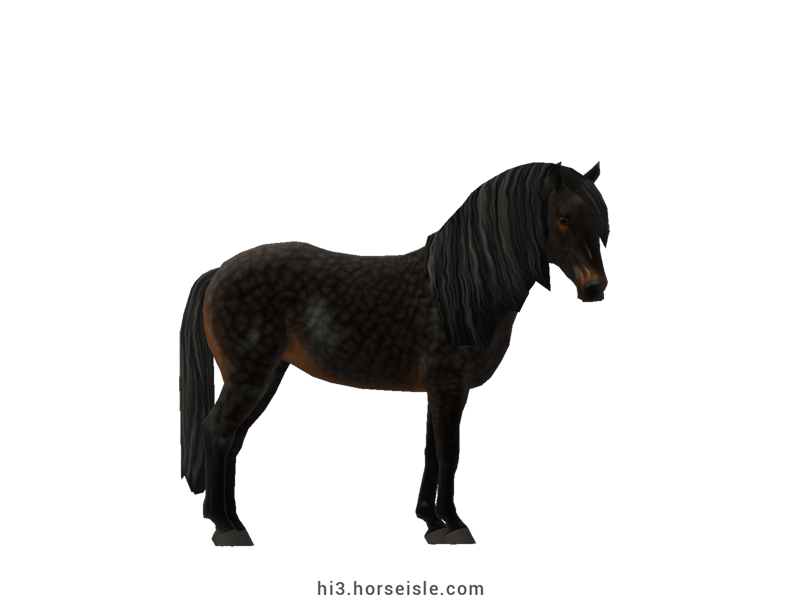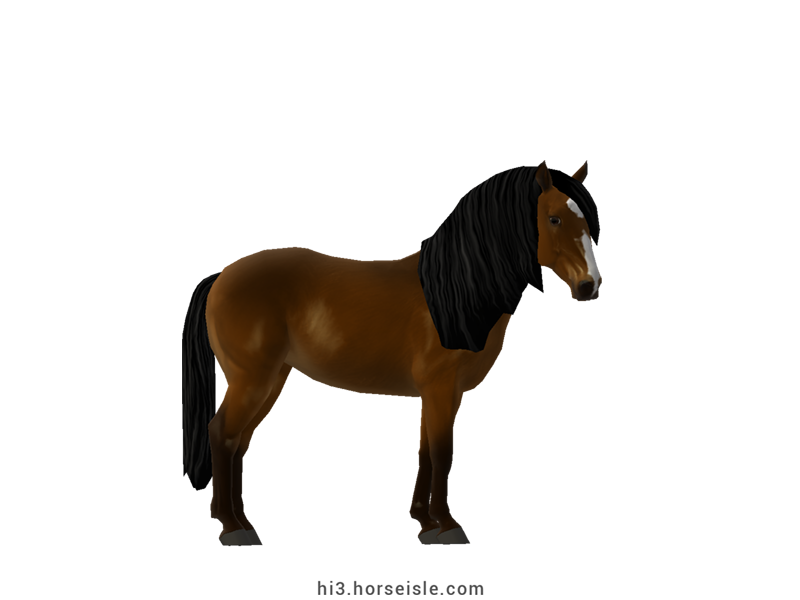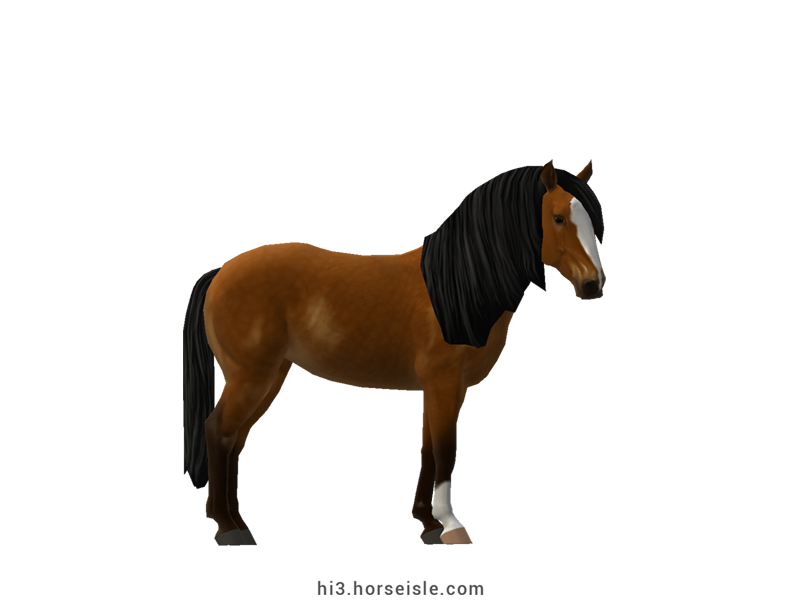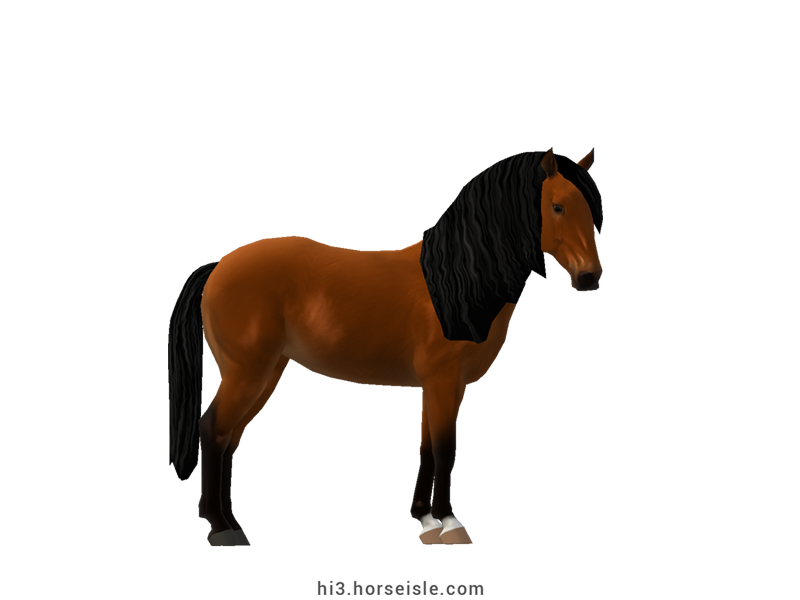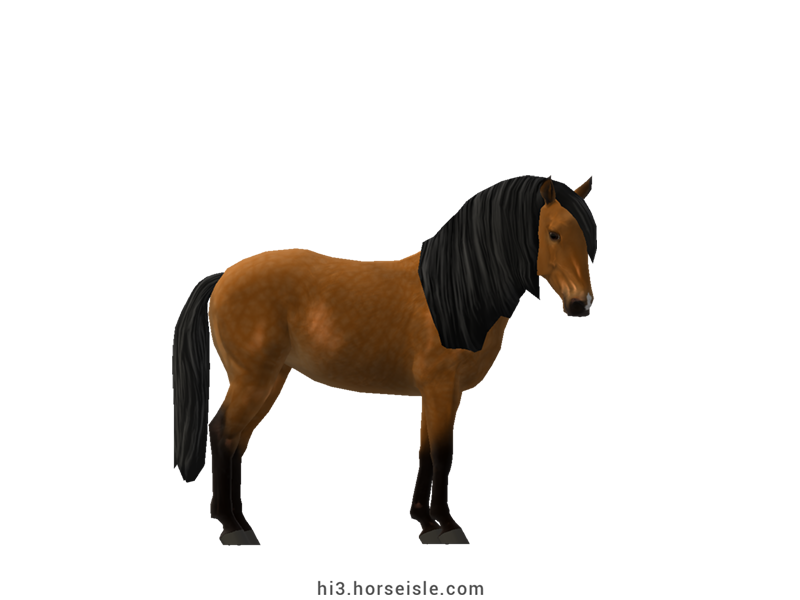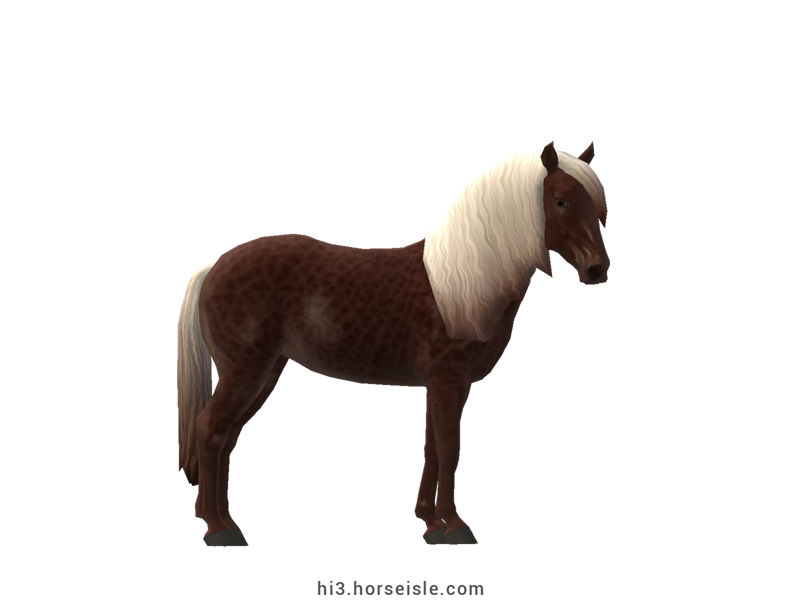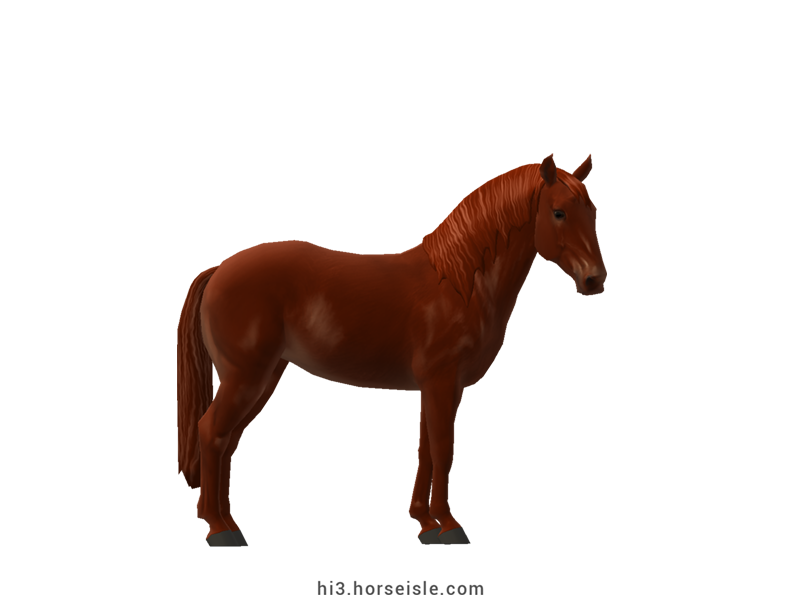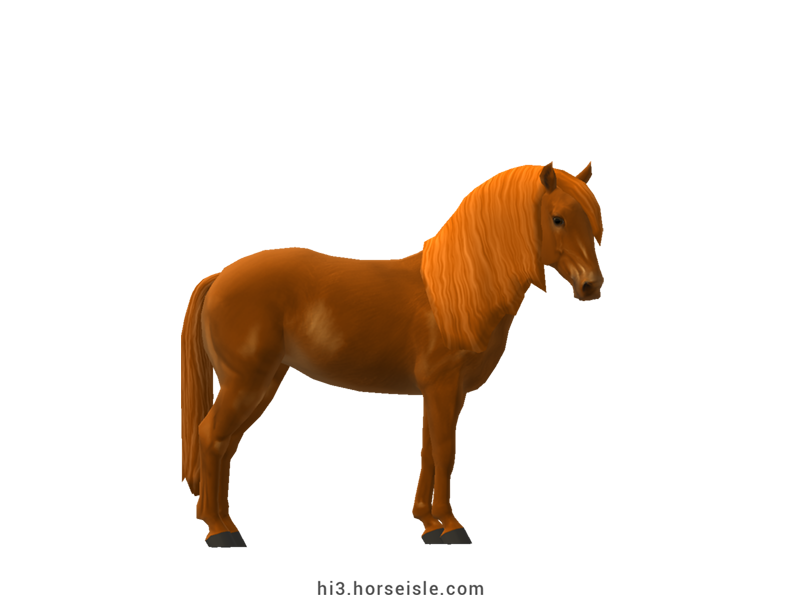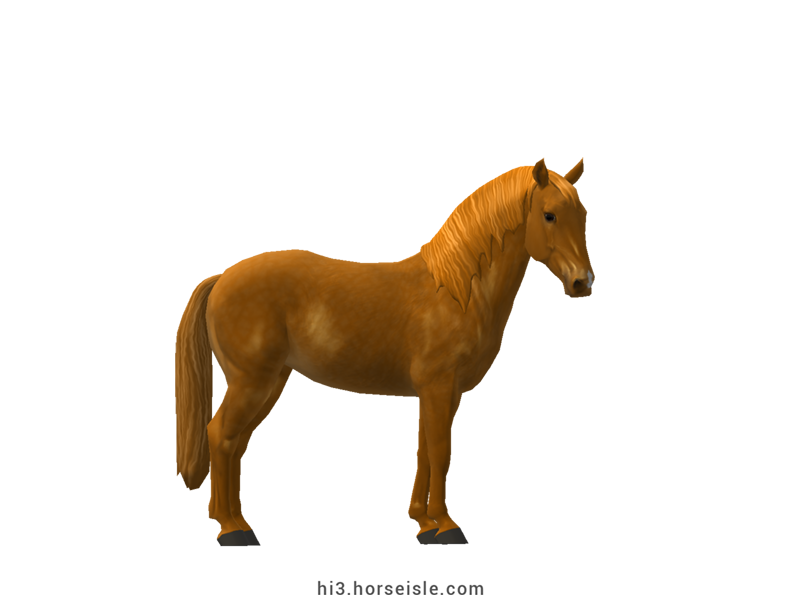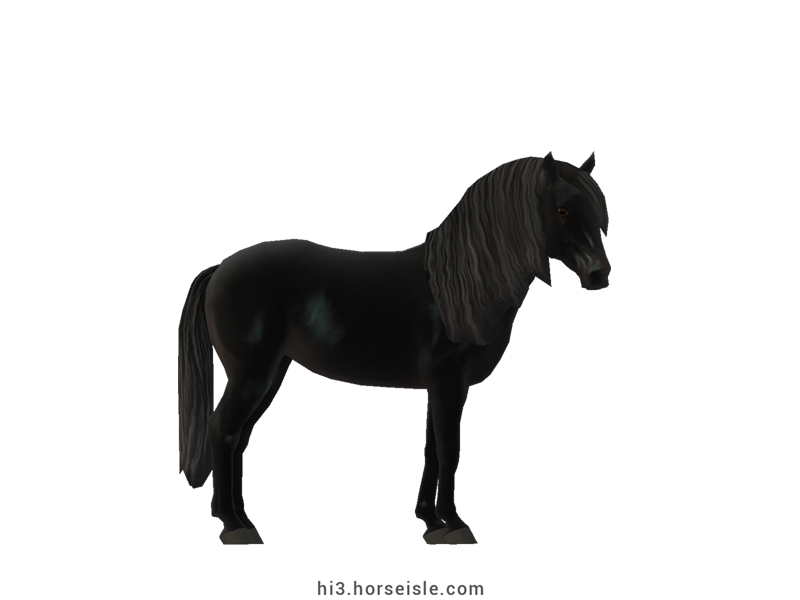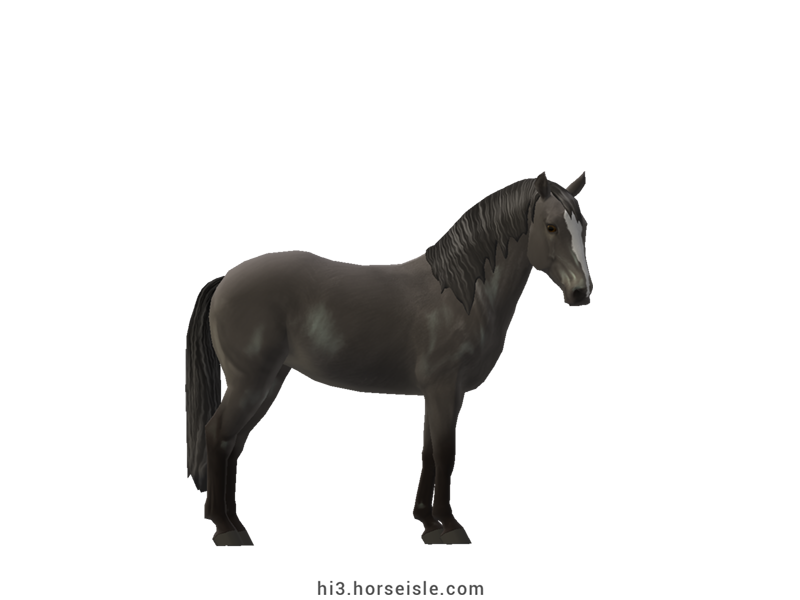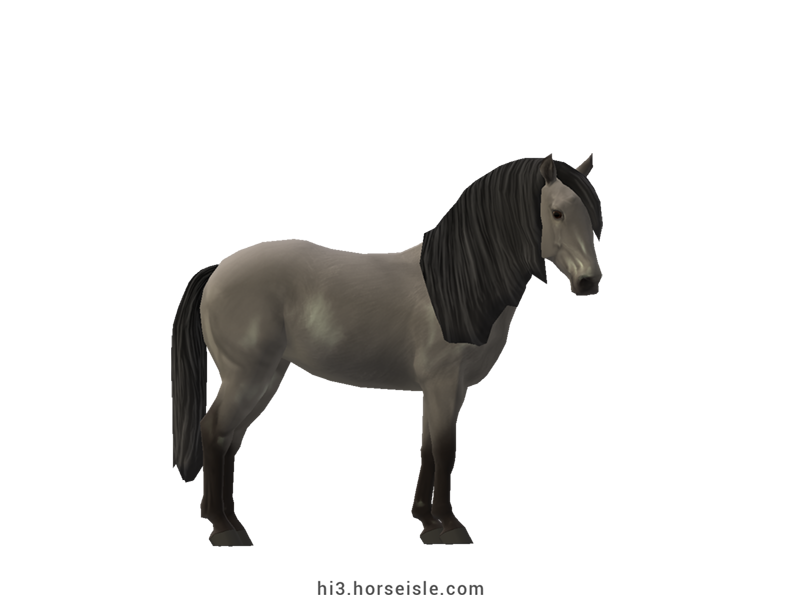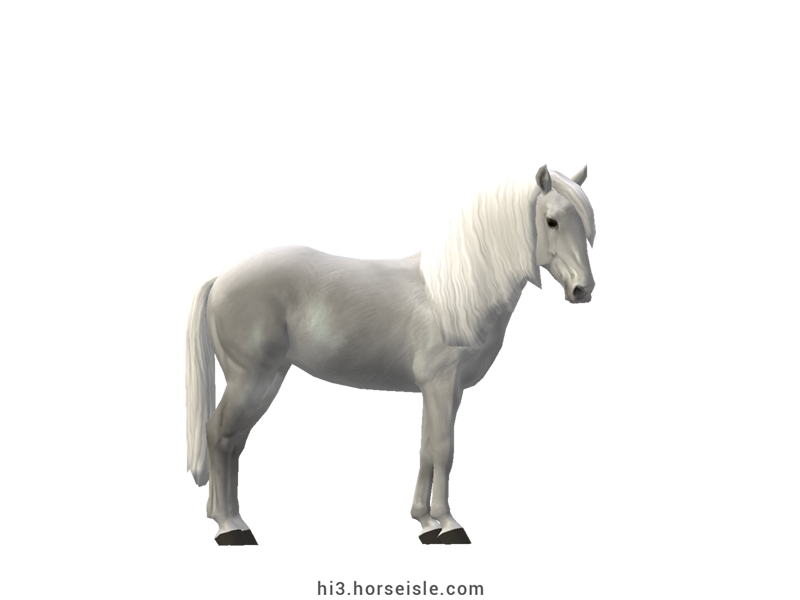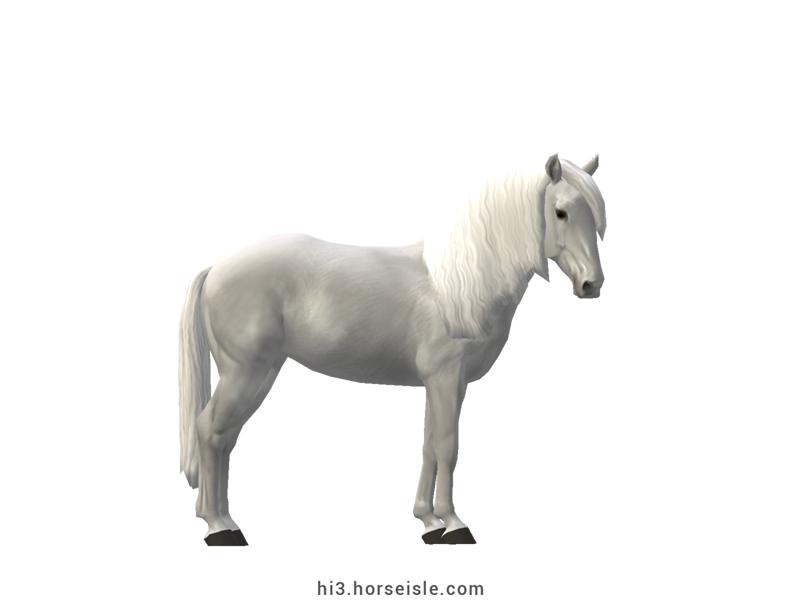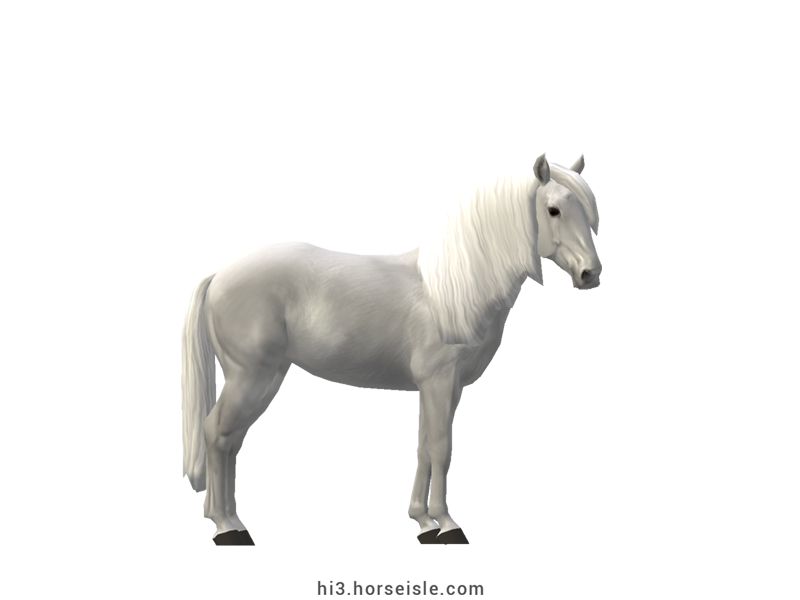Our Massive Real World Equine Reference!
[ INDEX ] Equine Type: Horse Breed: Carthusian [ PREV ] [ NEXT ]
The Carthusian (also 'Carthujano' and 'Cartujano') is a strain of an Andalusian breed that is purer than the Andalusian itself. It has one of the oldest studbooks in the world, dating all the way back to the 15th century. This makes the Carthusian the most authentic form of the original Andalusian horse.
The horse from the monastery:
The story of the Carthusian began at the end of the 15th century, with the establishment of a Carthusian monastery in Jerez, Andalusia, Spain. The monks who lived in the monastery had their own herds of horses, which they bred as part of a breeding program that they established.
About 250 years later, in the 18th century, the monks received a herd of mares who descended from a dark-grey stallion called Esclavo which was owned by the Zamora brothers. Esclavo was known for his fine quality and excellent conformation, which he passed on to his offspring, and therefore, the monks decided to use the mares to establish the Carthusian breed.
Esclavo's heritage:
Esclavo is largely regarded as the foundation sire of the Carthusian breeding lines. Especially, because the horses that were bred by the Carthusian monks were nicknamed "Zamoranos", after the Zamora brothers who owned Esclavo.
However, it is important to remember that the monks had already owned and bred horses before they received the herd of mares that descended from Esclavo. It is unclear if the monks had included these horses in the breeding program, and therefore it is unclear how significant were the characteristics and blood of those horses in the creation of the Carthusian, and, consequently, if the advantages of the Carthusian horses can be attributed solely to Esclavo.
The Zapata family to the rescue:
Over the next three centuries, the Carthusian monks refused to crossbreed their Carthusian horses with horses of other breeds, and thus kept the Carthusian bloodlines pure. This lasted for three centuries until 1810, when the monks were forced to leave the monastery without their horses.
After they left, a man named Pedro Joze Zapata bought from the monks 60 mares and three stallions, and continued the breeding of Carthusian horses in a pure manner, thus saving the strain from extinction. By carefully selecting which horses of the stock to breed, the Zapata family managed to improve the Carthusian stock without introducing any foreign blood.
Coming a full circle:
The Zapatas continued guarding the purity of the Carthusian for well over a century, passing the breeding program from generation to generation. This continued until 1983, when the breeding program was handed to the Spanish State Heritage Department. This ensured the official conservation of the purebred Carthusian by a Spanish authority.
To come a full circle, the Carthusian herd was moved to Fuente del Suero, a ranch in Jerez that is located nearby the very same monastry where the Carthusian originated in the 15th century.
The Carthusian today:
Today, Carthusian horses are bred in the Yeguada de la Cartuja Hierro del Bocado stud, which is located near the Jerez Monastery. They are trained for classical dressage and haute e'cole. Some are also trained for driving ("carriage") dressage.
The Carthusian vs. the Andalusian:
The Carthusian is a baroque, Spanish horse that shares roots and characteristics with another older breed that was (and still is) bred in Andalusia: the Andalusian. This similarity leads to the incorrect assumption that the Carthusian is equal to the Andalusian. In reality, these are two different strains of Pure Spanish Horses.
The critical difference between the Carthusian and the Andalusian is their purity. During the 17th and 19th centuries, the Andalusian was crossed with horses of other breeds, but the Carthusian was not.
This difference in breeding and bloodlines separated the two into different strains. So much so, that Carthusians are not allowed to be crossed with Andalusians as it will hurt their purity.
A heritage breed:
The purity of the Carthusian makes it the more authentic subtype of the two, in the sense that it more closely resembles what the Andalusian originally used to be like before it received foreign blood. It is also the reason why the Spanish authorities support the conservation of the Carthusian and regard it as a heritage breed.
Conformation:
Carthusian horses have similar conformation and disposition to those of the Andalusian horses. As such, they have a baroque conformation characterized by a convex profile, an arched neck that is thick of muscling, a short back, a round croup, muscular hindquarters, and a broad body.
That said, there is one main difference between the Carthusian and the Andalusian, and that is the Carthusian's frontal bosses (also known as "horns" even though these are not real horns).
Similar to the Andalusian, Carthusians have thick manes that often grow long and can be wavy. The tail grows long and thick.
Performance metrics:
The following are the: range, average, (SD), and MOE of performance metrics of ordered Carthusians in Horse Isle (not bred ones). In rare cases, horses might have metrics outside of the range. Breeders can produce horses that are beyond this range.
Speed: 15.1-16.3, 15.6 (0.3), 0.05.
Sprint: 55-66, 61 (2), 0.48.
Accel: 1.02-1.19, 1.11 (0.03), 0.01.
Decel: 0.94-1.11, 1.02 (0.04), 0.01.
Jump: 5.02-5.26, 5.15 (0.06), 0.01.
Pull: 2.20-2.92, 2.53 (0.14), 0.03.
Turning: 59.11-74.03, 65.21 (3.38), 0.66.
Reverse: 2.8-3.4, 3.1 (0.1), 0.03.
Stamina: 48.50-52.94, 50.97 (0.95), 0.19.
Reaction: 0.71-0.81, 0.76 (0.02), 0.00.
Coats & Height:
Colors: usually white-grey or light-grey, but more rarely dark grey, bay, black, and chestnut.
Additionals: flaxen, sooty, dark mane & tail. The coat is always solid.
* no brindle
Height: 14.3hh and 16.1hh.
The horse from the monastery:
The story of the Carthusian began at the end of the 15th century, with the establishment of a Carthusian monastery in Jerez, Andalusia, Spain. The monks who lived in the monastery had their own herds of horses, which they bred as part of a breeding program that they established.
About 250 years later, in the 18th century, the monks received a herd of mares who descended from a dark-grey stallion called Esclavo which was owned by the Zamora brothers. Esclavo was known for his fine quality and excellent conformation, which he passed on to his offspring, and therefore, the monks decided to use the mares to establish the Carthusian breed.
Esclavo's heritage:
Esclavo is largely regarded as the foundation sire of the Carthusian breeding lines. Especially, because the horses that were bred by the Carthusian monks were nicknamed "Zamoranos", after the Zamora brothers who owned Esclavo.
However, it is important to remember that the monks had already owned and bred horses before they received the herd of mares that descended from Esclavo. It is unclear if the monks had included these horses in the breeding program, and therefore it is unclear how significant were the characteristics and blood of those horses in the creation of the Carthusian, and, consequently, if the advantages of the Carthusian horses can be attributed solely to Esclavo.
The Zapata family to the rescue:
Over the next three centuries, the Carthusian monks refused to crossbreed their Carthusian horses with horses of other breeds, and thus kept the Carthusian bloodlines pure. This lasted for three centuries until 1810, when the monks were forced to leave the monastery without their horses.
After they left, a man named Pedro Joze Zapata bought from the monks 60 mares and three stallions, and continued the breeding of Carthusian horses in a pure manner, thus saving the strain from extinction. By carefully selecting which horses of the stock to breed, the Zapata family managed to improve the Carthusian stock without introducing any foreign blood.
Coming a full circle:
The Zapatas continued guarding the purity of the Carthusian for well over a century, passing the breeding program from generation to generation. This continued until 1983, when the breeding program was handed to the Spanish State Heritage Department. This ensured the official conservation of the purebred Carthusian by a Spanish authority.
To come a full circle, the Carthusian herd was moved to Fuente del Suero, a ranch in Jerez that is located nearby the very same monastry where the Carthusian originated in the 15th century.
The Carthusian today:
Today, Carthusian horses are bred in the Yeguada de la Cartuja Hierro del Bocado stud, which is located near the Jerez Monastery. They are trained for classical dressage and haute e'cole. Some are also trained for driving ("carriage") dressage.
The Carthusian vs. the Andalusian:
The Carthusian is a baroque, Spanish horse that shares roots and characteristics with another older breed that was (and still is) bred in Andalusia: the Andalusian. This similarity leads to the incorrect assumption that the Carthusian is equal to the Andalusian. In reality, these are two different strains of Pure Spanish Horses.
The critical difference between the Carthusian and the Andalusian is their purity. During the 17th and 19th centuries, the Andalusian was crossed with horses of other breeds, but the Carthusian was not.
This difference in breeding and bloodlines separated the two into different strains. So much so, that Carthusians are not allowed to be crossed with Andalusians as it will hurt their purity.
A heritage breed:
The purity of the Carthusian makes it the more authentic subtype of the two, in the sense that it more closely resembles what the Andalusian originally used to be like before it received foreign blood. It is also the reason why the Spanish authorities support the conservation of the Carthusian and regard it as a heritage breed.
Conformation:
Carthusian horses have similar conformation and disposition to those of the Andalusian horses. As such, they have a baroque conformation characterized by a convex profile, an arched neck that is thick of muscling, a short back, a round croup, muscular hindquarters, and a broad body.
That said, there is one main difference between the Carthusian and the Andalusian, and that is the Carthusian's frontal bosses (also known as "horns" even though these are not real horns).
Similar to the Andalusian, Carthusians have thick manes that often grow long and can be wavy. The tail grows long and thick.
Performance metrics:
The following are the: range, average, (SD), and MOE of performance metrics of ordered Carthusians in Horse Isle (not bred ones). In rare cases, horses might have metrics outside of the range. Breeders can produce horses that are beyond this range.
Speed: 15.1-16.3, 15.6 (0.3), 0.05.
Sprint: 55-66, 61 (2), 0.48.
Accel: 1.02-1.19, 1.11 (0.03), 0.01.
Decel: 0.94-1.11, 1.02 (0.04), 0.01.
Jump: 5.02-5.26, 5.15 (0.06), 0.01.
Pull: 2.20-2.92, 2.53 (0.14), 0.03.
Turning: 59.11-74.03, 65.21 (3.38), 0.66.
Reverse: 2.8-3.4, 3.1 (0.1), 0.03.
Stamina: 48.50-52.94, 50.97 (0.95), 0.19.
Reaction: 0.71-0.81, 0.76 (0.02), 0.00.
Coats & Height:
Colors: usually white-grey or light-grey, but more rarely dark grey, bay, black, and chestnut.
Additionals: flaxen, sooty, dark mane & tail. The coat is always solid.
* no brindle
Height: 14.3hh and 16.1hh.
[ INDEX ] [ PREV ] [ NEXT ]

